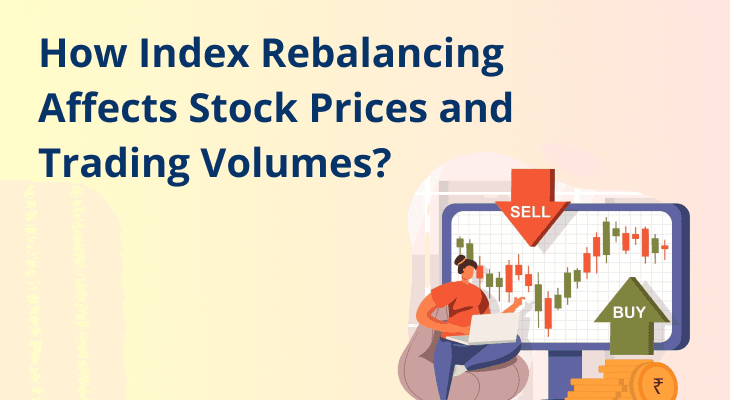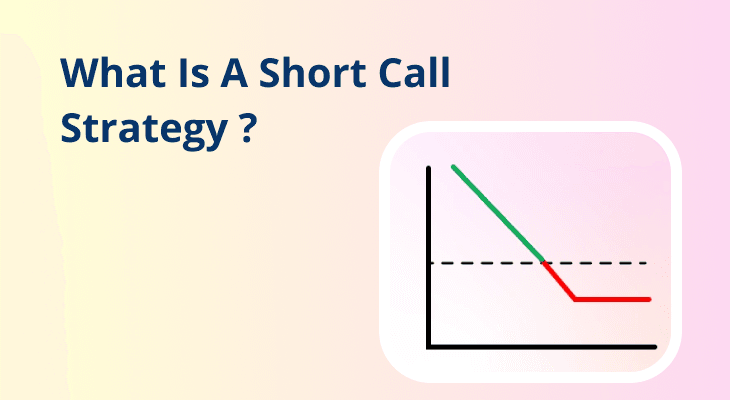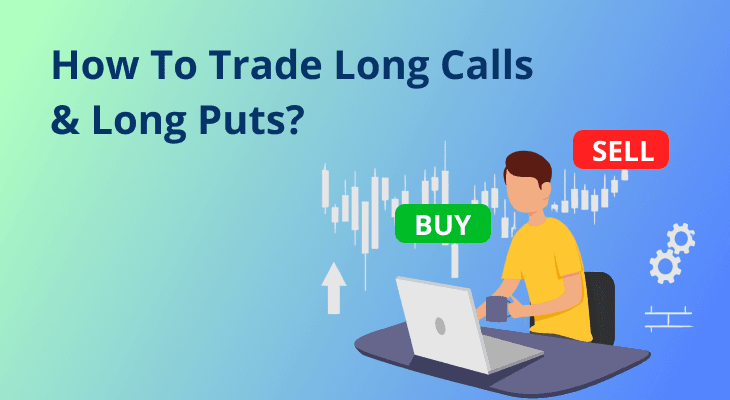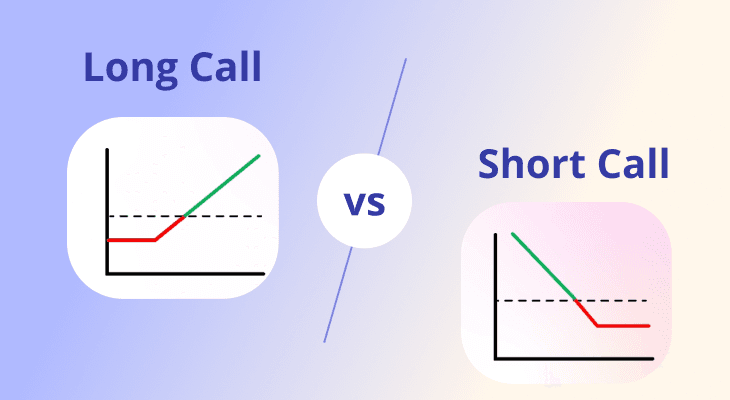
Table of content
- What Is A Stock Market Index?
- How Are Stocks Allocated In An Index?
- What Is Stock “Weight” In An Index?
- Normal Index vs Equal Weight Index
- Index Rebalancing
- Why Is Rebalancing Necessary?
- Impact On Stock Prices: Inclusion vs. Exclusion
- Effect On Trading Volumes
- Investor Takeaways: How To React To Index Rebalancing
How Index Rebalancing Affects Stock Prices and Trading Volumes?
Have you ever noticed a stock suddenly gaining or losing value after being added to or removed from a major index like the Nifty 50 or the BSE Sensex? This phenomenon is no accident. It is part of a process called index rebalancing. While it may sound technical, understanding this process is important for investors. It explains why certain stocks may see sudden price swings and volume spikes and offers strategic opportunity.
This guide explains what index rebalancing is, how it impacts stock prices and volumes, and how you, as an investor, can react wisely
What Is A Stock Market Index?
To understand index rebalancing, let’s first break down what a stock market index is and how stocks are selected and allocated within it.
A stock market index is simply a group of selected stocks that represent a portion of the overall market. Think of it as a basket of stocks chosen based on certain rules. This basket helps investors track how a segment of the market is performing.
For example, the Nifty 50 index includes 50 of the largest companies in terms of market capitalisation listed on the NSE, or the BSE Sensex includes 30 major companies on the BSE.
These indices are often used by:
- Mutual funds and ETFs to design products that mirror the index.
- Investors to track market trends.
- Analysts to benchmark performance.
How Are Stocks Allocated In An Index?
The selection and weights of stocks in an index is not random. It depends on several factors:
1. Market Capitalisation
This is the total value of a company’s shares in the market, calculated as:
Market Cap = Share Price × Total Number of Outstanding Shares
Larger companies usually have a bigger say in the index.
2. Free-Float Market Capitalisation
Not all shares are available for public trading. Some are held by promoters or the government.
So, free-float refers to the shares that are actually available for public trading.
Free-Float Market Cap = Share Price × Number of Freely Tradable Shares
Most major indices in India and globally (like Nifty or Sensex) use free-float market cap instead of total market cap to decide:
- Which stocks get included
- What weight (or proportion) each stock holds in the index
What Is Stock “Weight” In An Index?
The weight of a stock means how much importance or influence it has in the index. It is based on its free-float market capitalisation relative to the other stocks in the index.
For example:
- If Reliance has a 10% weight in the Nifty 50, then 10% of the index value comes from Reliance’s performance.
- A higher weight means bigger influence on index movement.
Normal Index vs Equal Weight Index
There are two main types of index weight models:
Free-Float Weighted Index (most common)
- Stocks are weighted according to their free-float market cap.
- Bigger companies have more weight and therefore, a greater impact on the index.
- Example: Nifty 50, Sensex
Equal Weight Index
- Every stock in the index has equal importance, regardless of its size.
- So, a small cap and a large cap stock both contribute equally.
- This offers more diversified exposure but less alignment with market size.
Index Rebalancing
Now that you understand how stocks are selected and weighted, let’s get back to index rebalancing.
Index rebalancing is the periodic adjustment of the components and their weights within a stock market index to keep it true to its market representation. Index providers such as NSE (Nifty 50) and BSE (Sensex) conduct these reviews (typically quarterly, semi-annually, or annually) to reflect changes in market capitalisation, free-float, liquidity, and sector distribution.
During rebalancing, the index may:
- Add new stocks that now meet inclusion criteria
- Remove stocks that no longer qualify
- Adjust the relative weights of existing stocks
This process ensures the index remains relevant, representative, and accurate in its portrayal of the market.
Why Is Rebalancing Necessary?
Markets are dynamic. Companies grow or shrink, sectors change in prominence, and stock liquidity shifts over time. Without rebalancing:
- An index could become outdated or unrepresentative
- Passive funds tracking the index wouldn’t reflect the actual market situation
- Investor confidence in index accuracy would drop
In short, rebalancing ensures the index continues to:
- Represent the market segment it was designed for
- Provide up-to-date exposure for passive investors and index funds
- Stay aligned with changes in stock performance, liquidity, and size
Impact On Stock Prices: Inclusion vs. Exclusion
When a stock is added to or removed from a major index, it often triggers significant price movements. This happens because many mutual funds and ETFs that track the index must adjust their holdings accordingly. Let’s understand how inclusion and exclusion influence stock prices in real market scenarios
Inclusion Effect
When a stock is added to an index, index-linked funds (mutual funds or ETFs) must purchase it to mirror the updated index. This demand causes:
- Pre-rebalance rallying: Stock prices often rise from the moment the change is announced.
- High volatility around implementation due to institutional buying.
- Post-rebalance correction: After the event, prices often retrace some gains.
Exclusion Effect
Conversely, stocks being removed from an index face selling pressure as index-tracking funds liquidate holdings:
- Pre-removal dip as investors anticipate the change
- Sharp drop on implementation day
- Short-lived rebound after the selling subsides
Removal may also lead to lower visibility and reduced liquidity over the long term.
Effect On Trading Volumes
Inclusions and exclusions trigger significant spikes in trading volume:
- Large reorder flows by index-linked funds
- Hedge activity by institutional and algorithmic traders
- Pre-event positioning and post-event portfolio adjustment
One study reveals trading volumes can almost double on rebalance days and up to six weeks prior, compared to average daily volumes. Furthermore, the highest volume of trading, typically, occurs during the last market moments. This concentration can temporarily reduce liquidity and spike transaction costs for uninformed retail investors.
Investor Takeaways: How To React To Index Rebalancing
Here are practical strategies to help you make the most of rebalancing events:
1. Monitor Announcements
Keep an eye on index rebalancing notifications. Stocks added to major indices like Nifty or Sensex often show price strength before implementation making them an opportunity for tactical trades.
2. Understand Timing
Index firms publish changes days or weeks ahead of the rebalancing. Passive funds may postpone trades until official implementation. Timing your entry well can avoid inflated prices or early spikes.
3. Use ETFs Cautiously
Investing in index ETFs can be efficient but watch for indirect costs caused by high turnover and rebalancing trades.
4. Avoid Distorted Liquidity
Volume spikes around rebalance dates can reduce liquidity outside these times. If you intend to buy or sell, do so when order books are steady, not during high-volume spikes.
5. Watch for Washout After Rebalance
Prices may dip post-rebalance. Consider using post-event corrections to enter or exit positions more advantageously.
6. Monitor Record Changes
Major rebalancing events can attract massive institutional flows.
Conclusion
Index rebalancing is a far more impactful event than most investors realize. It can create significant price and volume fluctuations, especially around inclusion and exclusion of stocks. By understanding the timing and mechanics of these changes, you can navigate opportunities more effectively whether through ETFs, direct stock positioning, or passive strategies.
For beginners, this process highlights the importance of tracking index changes and trading smartly. Rather than avoiding rebalancing days, stay informed, use technical discipline, and structure your trades to benefit from the shifts.
Additional Read: ETF vs Index Funds: The Key Difference You Must Know
Additional Read: How to invest in Index Fund - Features and Working
FAQ
What is index rebalancing and why is it done?
Index rebalancing is the process of adjusting the composition and weightage of stocks in a market index. It’s done periodically to ensure the index accurately reflects market trends, sector performance, or changes in company fundamentals. This helps the index remain a reliable benchmark for investors and index-tracking funds.
How often does index rebalancing occur in India?
Major Indian indices like Nifty 50 and Sensex usually undergo rebalancing semi-annually, in March and September. However, some sectoral or thematic indices may rebalance quarterly. The exact schedule is predefined by the index provider (like NSE or BSE) and is typically announced in advance to ensure market transparency.
How does index rebalancing affect stock prices?
When a stock is added to a popular index, its price usually rises due to increased demand from index funds and ETFs that must buy the stock. Conversely, when a stock is removed, selling pressure from these funds can drive its price down. These effects are often short-term but can be sharp.
What is the difference between free-float and equal-weight indices?
A free-float index assigns weights to stocks based on their market cap adjusted for shares available to the public. An equal-weight index, on the other hand, gives each stock equal representation regardless of size. Rebalancing impacts are more prominent in equal-weight indices due to frequent changes in stock weightages.
Why does inclusion in an index boost a stock’s trading volume?
When a stock is included in a major index, institutional investors, index funds, and ETFs need to buy it to align their portfolios. This sudden surge in demand increases trading volumes. In some cases, volumes spike several times above normal levels in the days around the rebalancing date.
What happens when a stock is excluded from an index?
Exclusion from an index often leads to a decline in both price and trading volume. Funds tracking the index sell the stock, creating downward price pressure. Investors may also view exclusion as a sign of weakening fundamentals or relevance, further impacting sentiment and liquidity.
Are the price changes due to rebalancing permanent?
Not always. The initial price movement is often driven by short-term demand-supply changes, especially from passive funds. Over time, a stock’s actual performance and fundamentals take precedence. Some stocks recover after exclusion, while others fail to sustain post-inclusion rallies if earnings or growth don’t justify the valuation.
Can individual investors benefit from index rebalancing?
Yes, but timing and strategy matter. Investors who track rebalancing announcements and understand market sentiment may position themselves in advance. However, front-running index changes carry risks, and sudden reversals can occur. It’s essential to base investment decisions on long-term fundamentals, not just rebalancing events.
What role do index funds and ETFs play in rebalancing effects?
Index funds and ETFs are major players in amplifying the effects of rebalancing. Since they replicate index composition, they buy or sell stocks in line with index changes. Their large-scale trades impact stock prices and volumes significantly, especially in the case of high-value or less liquid stocks.
How should I react to index rebalancing as a retail investor?
As a retail investor, don’t react impulsively to index rebalancing. Use the information as an insight into market trends but focus on fundamentals and long-term goals. Avoid speculative trades based solely on inclusion or exclusion. Instead, monitor how your holdings are affected and assess if any rebalancing justifies changes to your portfolio


